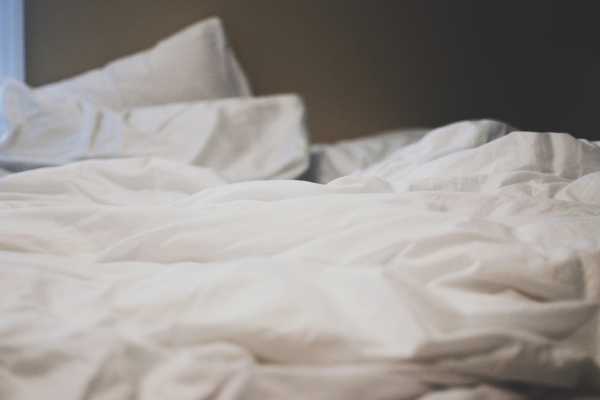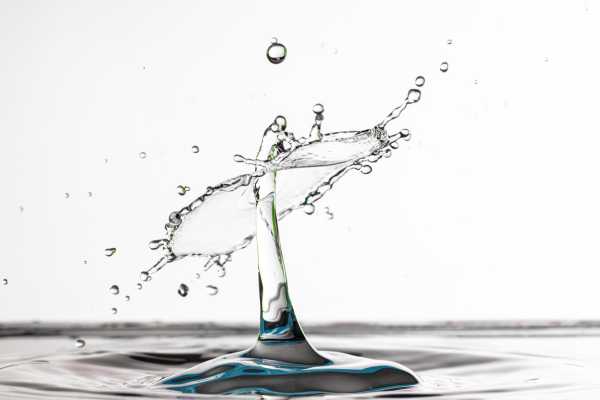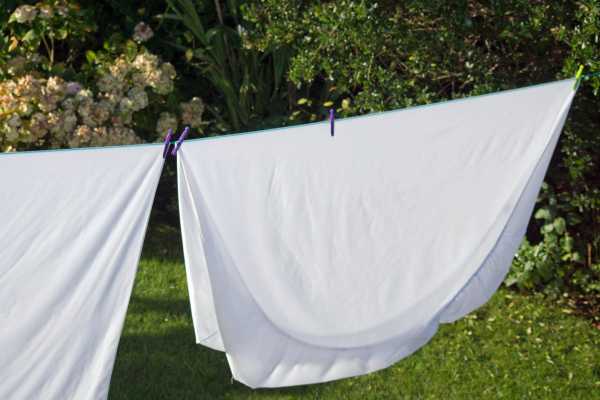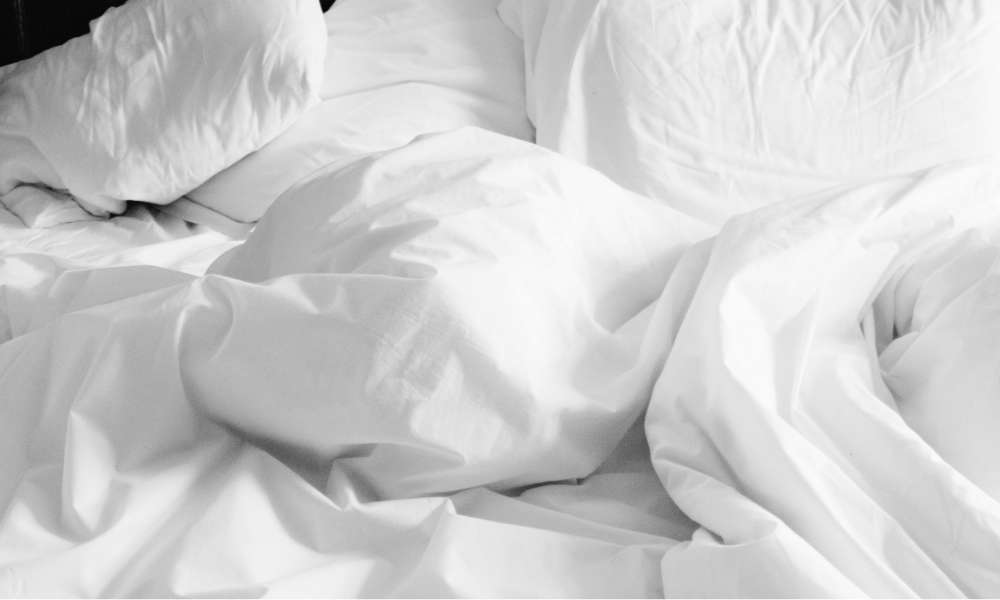Maintaining the pristine appearance and comfort of white sheets is crucial, and it starts with understanding the proper washing techniques. Our guide provides a comprehensive overview of why correctly Washing White Sheets of Hot Or Cold is vital for their longevity and hygiene. We delve into the hot versus cold water debate, shedding light on the advantages and drawbacks of each temperature setting. This insightful introduction empowers you to make informed choices, ensuring your white sheets remain a symbol of freshness and cleanliness in your home.
Characteristics of White Sheets

White sheets, known for their classic elegance and simplicity, come in various fabrics like soft cotton, luxurious linen, and smooth microfiber. Each material offers unique benefits, from cotton’s breathability to linen’s durability and microfiber’s affordability. However, their pristine appearance demands specific care. Regular laundering with suitable detergents, appropriate water temperatures, and gentle drying methods are essential to maintain their crisp, clean look. Understanding these care needs is key to preserving the inviting allure of white sheets.
Understanding Water Temperature Impact

The impact of water temperature on fabric fibers is crucial in laundry care. Hot water is effective for deep cleaning, as it opens up fabric fibers, allowing detergents to penetrate deeply and remove stubborn stains. Additionally, hot plays a vital role in disinfecting sheets, and eliminating germs and dust mites. Conversely, cold is gentler, preserving fabric integrity and preventing shrinkage or color fading. It’s also energy-efficient and suitable for less soiled linens. Balancing these temperatures depending on the fabric type and cleaning needs ensures optimal care for your laundry.
Advantages of Hot Water Washing
Hot water washing offers significant advantages, especially when dealing with heavy stains and dirt. Its enhanced cleaning power effectively breaks down oils, grime, and tough stains, ensuring a deeper clean. Additionally, hot water is paramount in sanitizing fabrics, effectively killing germs, bacteria, and dust mites, making it an ideal choice in situations of illness or for those with allergies. It’s particularly recommended for bedding and towels used during sickness, or for items exposed to high levels of allergens, providing a hygienic and safe laundry solution.
Advantages of Cold Water Washing
Cold water washing stands out for its energy efficiency and environmental benefits, consuming less energy compared to hot water cycles. This not only reduces utility bills but also minimizes the carbon footprint. Additionally, cold is gentler on fabrics, significantly reducing the risk of shrinkage, color fading, and damage, particularly in delicate and brightly colored textiles. Cold is also effective in removing certain types of stains, such as blood and sweat, preventing them from setting into the fabric. This combination of gentle fabric care, efficiency, and stain removal efficacy makes cold water washing a smart choice for many laundry needs.
Assessing Sheet Fabric and Condition

Assessing sheet fabric and condition, choosing the right water temperature is key. For durable fabrics like cotton and linen, warm to hot water can be used for deep cleaning, while delicate materials like silk or fine blends benefit from cold water to prevent damage. For new sheets, a gentle initial wash in cold helps set colors and reduce excess dye bleed. Conversely, older sheets, often harboring more wear and stains, may require warmer temperatures for effective cleaning and rejuvenation. Always consider the fabric’s strength and your cleaning goals when selecting the water temperature for optimal care and longevity of your sheets.
Pre-Treatment of Stains
Pre-treatment of stains on white sheets is a crucial step in maintaining their pristine condition. Start by identifying the type of stain and then apply a suitable stain remover or a mixture of baking soda and water for organic stains like sweat or blood. Gently rub the solution into the stain and let it sit for a few minutes before washing. The temperature in pre-treatment plays a significant role; use cold water for protein-based stains to prevent setting, and warm water for oil-based marks for better solubility. This targeted approach in pre-treatment enhances the effectiveness of the subsequent wash, keeping your sheets spotless and fresh.
Detergent and Washing Additives

Choosing the right detergents and washing additives is crucial for both hot and cold washes. For hot washes, opt for a strong detergent capable of breaking down oils and dirt at high temperatures. Adding a fabric-safe bleach or brightener can enhance the cleaning power and tackle tough stains. In cold washes, use a detergent formulated for low temperatures to ensure it dissolves and acts effectively, preventing residue. Cold water-specific detergents are designed to lift stains and freshen fabrics even in cooler settings. Remember, the efficacy of your detergent and additives is significantly influenced by the water temperature, making the right combination essential for optimal washing results.
Machine Washing Settings

Selecting the appropriate machine washing settings is vital for the care of white sheets. Choosing the right wash cycle is dependent on the fabric type and level of soiling. For everyday washing, a normal or delicate cycle is often sufficient, but heavily soiled sheets may require a heavy-duty cycle. It’s also important to adjust the load size to ensure sheets have enough room to move freely, promoting effective cleaning and rinsing. When adjusting water temperature settings, consider the fabric’s tolerance and the stain type. Hot water is ideal for deep cleaning and sanitization, while cold water is better for delicate fabrics and certain stains. Properly adjusting these settings ensures your white sheets are thoroughly cleaned while preserving their quality.
Rinsing and Drying

Thorough rinsing after both hot and cold washes is crucial in removing all traces of detergent and dirt, ensuring sheets remain residue-free and comfortable against the skin. For white sheets, an extra rinse cycle can be particularly beneficial, especially when using bleach or stain removers. After washing, drying practices play a pivotal role in maintaining the quality of the sheets. Air drying is ideal to preserve fabric integrity and prevent shrinkage, with direct sunlight also aiding in natural whitening. However, if using a dryer, opt for a low heat setting and remove sheets promptly to minimize wrinkles. These rinsing and drying best practices are essential for keeping sheets in pristine condition, enhancing their lifespan and comfort.
Special Considerations
Special considerations are necessary when handling delicate or high-quality white sheets. For these premium fabrics, gentle washing cycles and mild detergents are imperative to preserve their texture and appearance. Avoid harsh chemicals and opt for natural, fabric-friendly alternatives. In the hot vs. cold water debate, environmental and cost factors play a crucial role. While hot water ensures thorough cleaning and germ removal, it also consumes more energy, leading to higher utility costs and environmental impact. Cold water, conversely, is energy-efficient and eco-friendly, but may not always provide the same level of sanitization. Balancing these factors based on the specific needs of your sheets and personal preferences is essential for sustainable and effective laundry care.
Can I wash white sheets with cold water instead of hot?
Yes, you can wash white sheets with cold water if hot water is not suitable for the fabric or if you’re concerned about potential shrinkage or color fading. Cold water is gentler on fabrics and can be effective for removing surface dirt and odors. However, keep in mind that cold water may not be as effective at removing tough stains or sanitizing the sheets.
How often should I wash white sheets?
It’s recommended to wash white sheets every one to two weeks to maintain cleanliness and freshness. However, this may vary depending on personal preference, lifestyle, and environmental factors. Washing white sheets regularly helps to prevent the buildup of dirt, oils, and bacteria, keeping them hygienic and comfortable to sleep on.
Conclusion
Choosing between hot and cold washes for white sheets hinges on understanding fabric types, stain nature, and hygiene requirements. Hot water excels in deep cleaning and disinfection, making it suitable for heavily soiled or germ-prone linens. Cold water, on the other hand, is gentler, preserving fabric integrity and energy efficiency, ideal for less soiled sheets and environmental consciousness. Emphasizing tailored care for sheets ensures their longevity, appearance, and comfort. Balancing these factors, along with mindful detergent and washing settings, is key to maintaining the pristine condition of white sheets, ultimately enhancing the overall sleeping experience.
